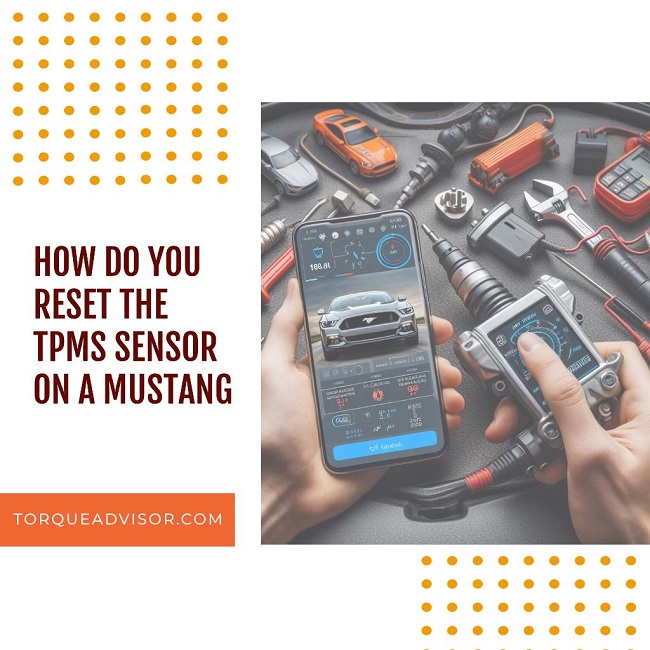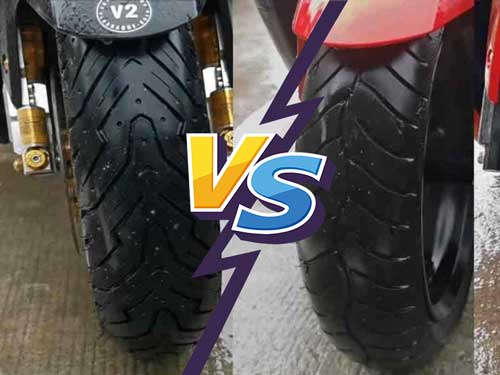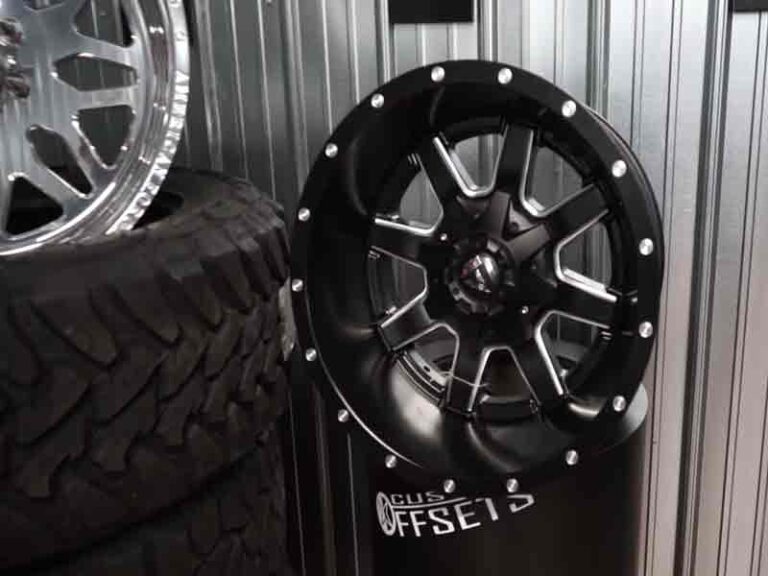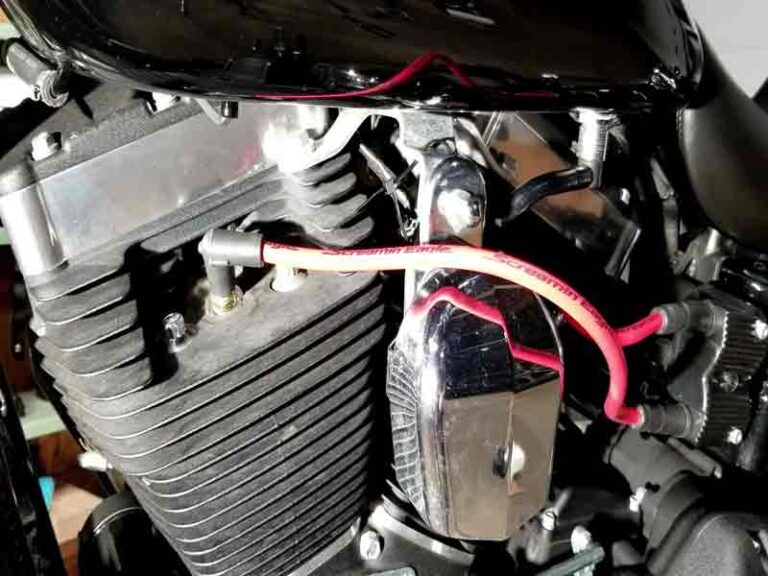How to Troubleshoot Mustang Tire Pressure Sensor :Solution

Mustang tire pressure sensor fault is a very common problem for ford user. Check tire pressure, inspect sensors, and reset the system. If issue persists, consult a professional mechanic.
Mustang Tire Pressure Sensor Fault Symptoms
Here are some common symptoms:
- TPMS Warning Light: The most obvious sign of a tire pressure sensor fault is the illumination of the TPMS warning light on your dashboard.
- Flashing or Blinking TPMS Light: In some cases, the TPMS light may flash or blink, indicating a more severe issue with the system.
- Inaccurate Tire Pressure Readings: You may notice that the displayed tire pressures do not match the actual tire pressures.
- No Tire Pressure Display: A complete absence of tire pressure readings on the display is a clear indication of a malfunction in the TPMS.
- Intermittent Issues: Sometimes, the TPMS may work intermittently, displaying correct readings. This inconsistency is a sign of a potential sensor or system malfunction.
- Low Tire Pressure: While this may seem obvious, it’s worth noting that a tire pressure sensor fault can lead to undetected low tire pressure.
Understanding the causes and addressing this fault promptly is essential to ensure a smooth and safe driving experience.

What Does Tire Sensor Fault Mean Mustang?
A “Tire Sensor Fault” message in a Mustang can mean a few different things, depending on your specific model year and the circumstances leading to the message. Here are some possibilities:
- Faulty Tire Pressure Monitoring System (TPMS) Sensor
- Incorrect Tire Pressure
- Interference
- Software Glitch
How Does A Ford Mustang Tire Pressure Sensor Work?
Ford Mustang tire pressure sensors work through a combination of internal pressure measurement and radio frequency (RF) transmission. Each sensor is mounted inside the tire, usually near the valve stem.
It contains a small battery, a pressure sensor, and an RF transmitter chip. The pressure sensor continuously measures the air pressure inside the tire.
When the pressure changes significantly (usually beyond a threshold set by the manufacturer), the sensor’s transmitter chip activates. It transmits a coded RF signal containing the tire’s unique ID and the current pressure reading. The pressure data is then compared to the recommended level for your Mustang model.
Mustang Tire Pressure Sensor Fault Codes
Here’s a breakdown of some common fault codes for 2015-2023 Mustangs:
Tire Pressure
- C121A: Low tire pressure in left front tire
- C121B: Low tire pressure in right front tire
- C121C: Low tire pressure in left rear tire
- C121D: Low tire pressure in right rear tire
- C121E: Spare tire pressure low
Sensor Communication
- C122A: Left Front Tire Pressure Sensor malfunction
- C122B: Right Front Tire Pressure Sensor malfunction
- C122C: Left Rear Tire Pressure Sensor malfunction
- C122D: Right Rear Tire Pressure Sensor malfunction
- C122E: Spare Tire Pressure Sensor malfunction
- C1245: TPMS system malfunction
Other
- C1220: Battery voltage for TPMS system low
- C123A: TPMS training mode not completed
- C123B: TPMS unable to learn new sensors
How Do You Reset The Tpms Sensor On A Mustang?
The method for resetting the TPMS sensor on a Mustang depends on your specific model year. Here’s a breakdown for the two main generations:
1. 2015-2023 Mustangs
Here’s the process:
- Press and release the brake pedal.
- Turn the ignition on and off three times in a row (a total of 6 button presses) without pressing the clutch.
- Repeat the entire process (brake press followed by 3 on/off cycles) one more time.
- If successful, the horn will honk once to indicate the system is ready.
2. 2007-2014 Mustangs
These models often have a TPMS reset button located under or near the steering wheel. Alternatively, some models might require inflating and deflating all tires to a specific pressure or disconnecting the battery.

What Causes Tire Pressure Sensor Fault
- Low tire pressure
- Faulty wiring
- Improved fuel efficiency
- Sensor malfunction
- Battery failure
- Corrosion
- Dashboard warning light
- Tire change
- Unresponsive tpms system
- Flat tires
- Uneven tire wears
2015 Mustang Tire Pressure Sensor Fault
If your 2015 Mustang is displaying a tire pressure sensor fault, it may indicate a malfunction in one or more tire pressure monitoring system sensors. Check tire pressures and consult a professional if the issue persists.
Ford Mustang Tpms Reset Without Tool
There are a few alternative methods you can try without the tool, but they are less reliable and have mixed success rates:
1. Driving Method
- This method relies on the car automatically detecting and reprogramming the sensors while driving.
- Make sure all tires are inflated to the recommended pressure.
- Drive consistently at highway speeds (50-70 mph) for at least 20 minutes.
Some users report success with this method, but it may take longer than using the tool and isn’t guaranteed.
2. Inflation/Deflation Method
This method attempts to force the sensors to activate by simulating rapid pressure changes.
- Inflate all tires (including the spare) to 3-5 psi above the recommended pressure.
- Slowly deflate all tires completely.
- Reinflate all tires to the recommended pressure.
- Drive for a few miles to see if the light resets.
3. Battery Disconnect Method
This method is more risky and should be done as a last resort.
- WARNING: Disconnect the battery only when the engine is off and cool.
- Disconnect the negative battery terminal.
- Wait for 5-10 minutes to allow the system to discharge.
- Reconnect the negative battery terminal.
- Turn on the car and see if the light resets.
Read More About Tire Pressure Monitoring System Fault: Common Reasons & Solutions
Ford Mustang Tire Pressure Sensor Fault Reset
To reset the tire pressure sensor fault on a Ford Mustang, follow these steps:
- Ensure all tires are properly inflated.
- Turn the ignition to the ON position without starting the engine.
- Locate the TPMS reset button, usually located in the glove compartment or under the steering wheel.
- Press and hold the reset button until the TPMS light blinks three times.
- Start the car and drive for at least 10 minutes to allow the system to recalibrate.
Mustang Tire Pressure Sensor Fault Fix
The solution depends on the specific cause of the issue. However, I can guide you through the troubleshooting process to identify and rectify the problem:
1. Diagnose the problem
- Check tire pressure: Ensure all tires are inflated to the recommended pressure listed in your owner’s manual. This is the most common culprit.
- Locate specific tire: Some Mustangs display which tire triggered the fault. Check your dashboard for details.
- Look for interference: Radio frequency interference can disrupt the signal. Try driving away from potential sources like chargers or electronics.
- Review recent changes: Did you replace tires or batteries recently? This might require sensor reprogramming.
2. Reset the TPMS system
Follow the instructions for your specific 2015 Mustang model mentioned earlier. You can try both the button press method and driving method.
3. If the message persists
- Consider using a TPMS tool: This is the most reliable method for reprogramming sensors, especially if you replaced tires or batteries.
- Visit a mechanic: They can scan the system for error codes and diagnose the problem accurately.
What Does It Mean When It Says Tire Sensor Fault?
When a vehicle’s tire pressure monitoring system (TPMS) displays a “Tire Sensor Fault” message, it typically indicates a problem with one or more tire pressure sensors.
Modern vehicles are equipped with TPMS to monitor the air pressure in each tire and alert the driver if any tire is significantly under-inflated.
Can You Drive With A Tire Pressure Sensor Fault?
If the TPMS sensor itself is malfunctioning but the tire pressures are within the recommended range, it should not pose an immediate safety risk.
How Do You Fix A Bad Tire Pressure Sensor?
Here are some general steps you can take to troubleshoot and address the issue:
1. Check Tire Pressure Manually
Start by manually checking the tire pressure using a reliable tire pressure gauge. Compare the readings with the recommended pressure listed in your vehicle’s manual or on the driver’s side door jamb.
2. Inflate or Deflate Tires
If the manual pressure check reveals a significant difference from the recommended pressure, adjust the tire pressure accordingly. Inflate or deflate the tires as needed to match the manufacturer’s specifications.
3. Resetting the TPMS
Some vehicles allow you to reset the TPMS after adjusting the tire pressure. This may involve using buttons on the dashboard or through a specific sequence of actions.
4. Replace the Sensor Battery
Tire pressure sensors are often equipped with a battery that can wear out over time. If your sensor is not working, it could be due to a dead battery.
5. Check for Interference
Ensure that there are no electronic devices in close proximity that may be causing interference.
How Do You Reset A Tire Sensor?
To reset a tire pressure sensor, start by inflating all tires to the recommended pressure. Then, locate the TPMS reset button, usually near the steering wheel or in the glove compartment.
Press and hold the button until the TPMS light blinks, indicating a successful reset.

What To Do When Tire Pressure Sensor Fault
When facing a tire pressure sensor fault, manually check tire pressures using a gauge. Add air as needed to meet the vehicle manufacturer’s specifications.
If the issue persists, consult the vehicle’s manual for reset instructions or seek professional assistance to address the sensor fault.
Mustang Gt Tire Pressure Sensor Fault
If your Mustang GT is displaying a tire pressure sensor fault, it may indicate a malfunction in the tire pressure monitoring system (TPMS).
Check and adjust tire pressures, inspect sensors, and if the issue persists, consult your vehicle’s manual or seek professional assistance for further diagnostics and repairs.
How Can A Tire Sensor Get Damaged?
Here are some common causes:
- Physical Damage: Physical impacts, such as hitting a pothole or curb, can cause damage to the sensor or its components.
- Corrosion: Exposure to harsh weather conditions and road salt can lead to corrosion.
- Battery Failure: These batteries have a limited lifespan (typically around 5-10 years). When the battery fails, the sensor may stop working.
- Faulty Seals: If the seals around the sensor are damaged or compromised, water and debris may enter, leading to internal damage or corrosion.
- Improper Installation: Incorrect installation during tire replacement or maintenance can cause damage to the sensor.
- Electrical Issues: Wiring and electrical connections can be susceptible to damage.
- Excessive Heat: Prolonged exposure to high temperatures can affect the sensor’s performance and longevity.
Read Also 6 Best Tpms Retrofit Kits To Upgrade Your Vehicle’s Tire System
FAQs
Is tire pressure sensor fault serious?
Yes, a tire pressure sensor fault can be serious. It can lead to inaccurate tire pressure readings, potentially causing unsafe driving conditions, reduced fuel efficiency, and increased tire wear.
How long can I drive when tire pressure light comes on?
It is recommended not to drive more than80 km when the tire pressure light comes on. Continuing to drive with low tire pressure can lead to increased risk of a flat tire or other safety issues.
Why is my tire pressure sensor fault but tires are fine?
The tire pressure sensor may be faulty due to issues such as a dead battery in the sensor, sensor damage, or communication errors.
What happens when a tire pressure sensor fails?
When a tire pressure sensor fails, it may result in inaccurate or no readings on the tire pressure monitoring system (TPMS). This can compromise vehicle safety and fuel efficiency.
How long do Ford TPMS sensors last?
The lifespan of Ford TPMS (Tire Pressure Monitoring System) sensors typically ranges from 5 to 10 years.
Can tire sensor be damaged?
Yes, tire pressure sensors can be damaged due to factors such as impact, corrosion, or electronic malfunctions.
How do you test a tire sensor?
To test a tire sensor, ensure the vehicle is stationary, turn on the ignition, and check the tire pressure readings on the dashboard. If readings are inaccurate or absent, the sensor may be faulty
What is the lifespan of a tire sensor?
The lifespan of a tire pressure sensor typically ranges from 5 to 10 years. However, factors such as usage, environmental conditions, and battery life can affect their durability.
What is the tire pressure for a Mustang?
The recommended tire pressure for a Mustang is typically 32 PSI (pounds per square inch).
Conclusion
Addressing the Mustang tire pressure sensor fault is imperative for optimal vehicle performance and safety. Ignoring this crucial aspect may lead to compromised handling and potential safety hazards.
Regular checks and timely resolutions are key to preserving the integrity of your Mustang and ensuring a confident ride on the road.






